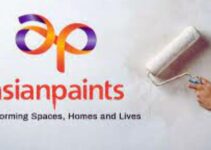L’Oreal is a personal care, beauty, cosmetic, and consumer goods manufacturing French multinational corporation. Eugene Schueller founded the personal care and consumer goods manufacturing brand in 1909. Today, we’ll discuss the value chain analysis of L’Oreal supply chain analysis; primary and supporting activities in the process of value chain analysis Example Company. They are inbound and outbound logistics, operations, marketing, and customer service; infrastructure, HRM, technology, and procurement as an application of the value chain analysis process.
Brands Operating Under the Ownership of L’Oreal
- Garnier
- Diesel
- La-Roche-Posay
- Redken
- Urban Decay
- Maison Martin Margiela
- Viktor & Rolf
- Biotherm
- Shu Uemura
- Kerastase
- Maybelline New York
Production Divisions of L’Oreal
- Dermatological Beauty Division
- L’Oreal Luxe
- Consumer Products
- Professional Products
The Value chain analysis of L’Oreal supply chain analysis would analyze the primary and supporting activities in the process of value chain analysis. They’re inbound and outbound logistics, operations, marketing, and services; infrastructure, HRM, technology, and procurement. Here’s supply chain analysis of L’Oreal value chain analysis company example as follows;
Value Chain Analysis of L’Oreal
Let’s discuss the primary and supporting activities involved in the process of value chain analysis of L’Oreal supply chain analysis. It is an application of value chain analysis based on Porter’s model; some of the key elements and components of value chain analysis are as follows;
Primary Activities of L’Oreal
The primary activities are directly involved in the production of products and goods and adding value to the company. Some of the five main primary activities in the value chain analysis of L’Oreal supply chain analysis are as follows;
Inbound Logistics of L’Oreal
I-Suppliers Networks
L’Oreal has established a very large suppliers network comprising over 50,000 suppliers and vendors in various countries across the globe. The large and diverse suppliers and supply chain network ensure the smooth availability of raw materials, supplies, and components for the production of beauty, personal care, cosmetic, and consumer products.
II-Sustainable Suppliers Relationship
L’Oreal partners up and collaborates with suppliers and vendors that have a strong ethical and sustainable commitment to the society and environment. The personal care brand focuses on building a responsible and sustainable relationship with suppliers to ensure high standards, a trusting environment, and ethical compliance. According to an estimate, approximately 95% of L’Oreal’s suppliers fully comply with the social performance and environmental standards.
III-Raw Material Sourcing
Ethical sourcing of raw materials, supplies, and components is significant for the production of L’Oreal’s beauty and personal care products. The company closely works with sourcing suppliers and vendors to ensure the smooth supply of safe and high-quality ingredients and materials for beauty products. However, the personal care brand carefully evaluates and selects those suppliers that would comply with the safety and quality standards.
Outbound Logistics of L’Oreal
I-Distribution & Transportation Channels
L’Oreal employs multiple transportation and distribution channels to efficiently deliver the final products to the end consumers. Multiple logistical channels deliver raw supplies and materials to the production factories; moving finished goods to the warehouses and distribution centers, and then delivering it to the retail outlet points and end consumers.
II-Green Transportation
In order to keep up with the growing environmentally friendly trends and decrease the carbon emission rate, L’Oreal uses LNG (liquified natural gas) in its vehicles along with employing electric vehicles. The personal care brand has a goal of reducing the carbon emission rate by 50% and reaching net zero carbon emissions by 2050.
Operations of L’Oreal
I-Production & Manufacturing Units
L’Oreal has established a network of 40 manufacturing factories and they have a capacity of procuring 6 billion beauty products annually. Approximately 65% of the company’s production and manufacturing sites are carbon neutral. The personal care brand employs the latest industry equipment and innovative technology to efficiently perform its production operations with limited wastage of resources.
II-Warehouses & Distribution Centers
L’Oreal has established a network of over 152 warehouses and distribution centers in various countries across the world. The company has carefully built them in such geographical regions and areas in proximity to the location of retail outlet points. It helps the company to save the delivery time and transportation cost with speedy and efficient delivery of personal care products.
Marketing & Sales of L’Oreal
I-Marketing & Advertisement
L’Oreal has successfully launched various marketing and advertisement campaigns over the years for the promotion of its products and brand. The beauty and personal care brand employs various media channels; TV, print media, digital media, social media platforms, billboards, and influencer marketing campaigns to approach the end consumers.
II-Point of Sale Marketing
In order to increase the conversion rate, L’Oreal runs point-of-sale advertisement promotional campaigns. They’re highlighting the benefits of its beauty products, focusing on quality, eco-friendly, and sustainable materials and ingredients. These all elements attract the attention of customers and increase the conversion rate of the brand.
Services of L’Oreal
L’Oreal offers a wide range of services in the beauty and personal care area to improve the customer satisfaction level. Some of them are as follows;
- Organizing events
- Telephonic support line for expert advice
- Mobile application
- Transport services to deliver its products
Supporting Activities of L’Oreal
Supporting activities are indirectly involved in the production of products and goods and adding value to the company. Some of the main supporting activities in the value chain analysis of L’Oreal supply chain analysis are as follows;
Infrastructure of L’Oreal
L’Oreal has established a very large infrastructure of production and manufacturing factories, research facilities, warehouses and distribution centers, and suppliers and transportation networks. Well-developed infrastructure helps the company to smoothly perform its various operations and timely deliver the finished goods to the end consumers.
HRM of L’Oreal
L’Oreal has employed roundabout 88000 employees to manage its global operations. The human resource management department of the company plays a key role in building an innovative working environment; promoting sustainability in its entire supply chain network and operations; and offering equal employment opportunities for all regardless of any different differences or discrimination.
Technological Development of L’Oreal
L’Oreal has established a network of over 21 research and development facilities in various countries across the world. Their objective is to develop innovative, safe, and high-quality personal care and beauty products for customers with unique materials and efficient methods of production. Research, innovation, and technological development play a key role in making product offers up-to-date and relevant to the market.
Procurement of L’Oreal
L’Oreal is highly careful and cautious about the ethical and responsible sourcing and procurement of raw materials, supplies, and goods. In fact, the company has set up strict guidelines and standards for suppliers to ensure the procurement of sustainable materials and compliance with environmental and human rights standards.
Conclusion: L’Oreal Value Chain Analysis Example Company | Application of Value Chain Analysis Process
After an in-depth study of the value chain analysis of L’Oreal; we have realized that L’Oreal is the world’s leading personal care and beauty products manufacturing brand. If you are learning about the L’Oreal value chain analysis example company; then you should keep in mind the abovementioned primary and supporting activities. They’re inbound and outbound logistics; operations, marketing and sales, and services; infrastructure, procurement, HRM, and technological development as an application of the value chain analysis process.
Ahsan is an accomplished researcher and has a deep insight in worldly life affairs. He goes Live 3 days a week on various social media platforms. Other than research writing, he’s a very interesting person.


